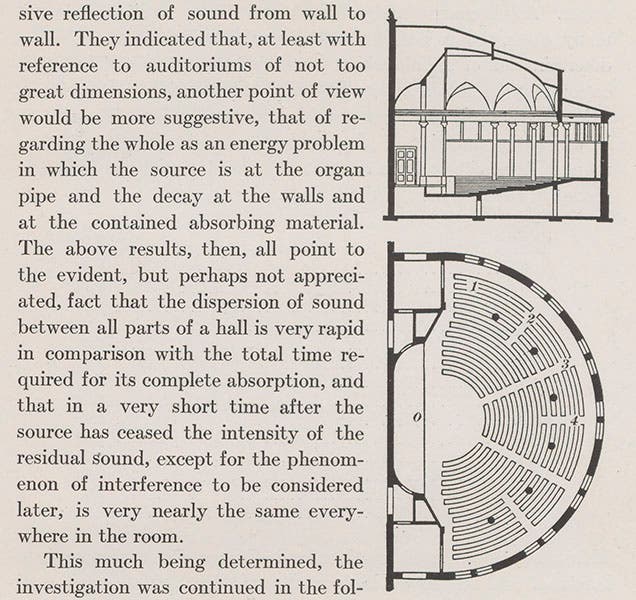Scientist of the Day - Wallace Clement Sabine
Wallace Clement Sabine, an American acoustical physicist, was born June 13, 1868. Sabine was the first person to design a listening space on the basis of acoustics. Although he had no prior experience in acoustics or acoustical design, he was asked to improve the acoustics of the lecture hall in the new Fogg Museum in Harvard, which opened in 1895. The problem? – it was impossible for the audience to understand anyone speaking in the hall.
Inventing his own measuring equipment, Sabine discovered that the auditorium had a reverberation time (the time it takes a sound to disappear) of around 5 seconds. So if someone were speaking, that first word would hang around while another 10 words were uttered, making comprehension impossible. Using seat cushions as his standard absorption unit, Sabine fiddled and measured and discovered that the ideal reverb time for an auditorium was around 1 second, and he corrected the Fogg situation with carpets and draperies (third and fourth images).
Immediately thereafter, Sabine was asked to have a go at the Boston Music Hall, then being designed. Using carefully constructed wall niches and an unusual rectangular shape, Sabine designed a music hall with a reverb time of just over 2 seconds, which he deemed ideal for music. The Music Hall (now Boston Symphony Hall) was completed in 1900, and its acoustics were superb; indeed, Symphony Hall still ranks as one of the top listening venues in the world (first and fifth images). When the stage was recently renovated, designers were so afraid of compromising Sabine’s exquisite acoustical setting that they used the same wood, the same size planks, and even the same hand-forged nails when they redid the space. In this they were apparently successful.
In Sabine’s honor, the modern unit of sound absorption is called the Sabin, equivalent to the absorbing capacity of an open window one-foot square (I am not sure why it is OK to honor someone by misspelling his name). Sabine’s seat cushion had an absorption of about 0.7 Sabins; that of the human body is about 4.7 Sabins.
After Sabine’s death in 1919, his various papers on acoustics were published in a single volume in 1922, imaginatively titled Collected Papers on Acoustics (fifth image). We drew on it for most of our images, including a diagram of the lecture room at the Fogg Art Museum (third image), a graph showing the decrease of the reverb time with the addition of cushions (fourth image), and a diagram comparing the new Boston Music Hall with the old one (sixth image).
The best illustration in the entire collection might be the lovely frontispiece portrait of Sabine (second image).
Dr. William B. Ashworth, Jr., Consultant for the History of Science, Linda Hall Library and Associate Professor emeritus, Department of History, University of Missouri-Kansas City. Comments or corrections are welcome; please direct to ashworthw@umkc.edu.











